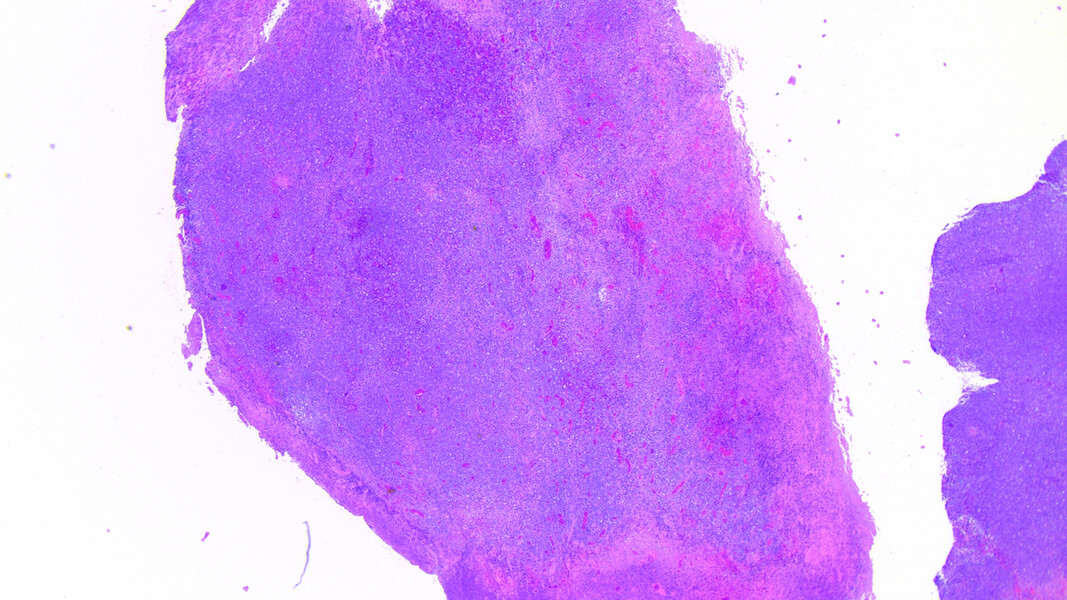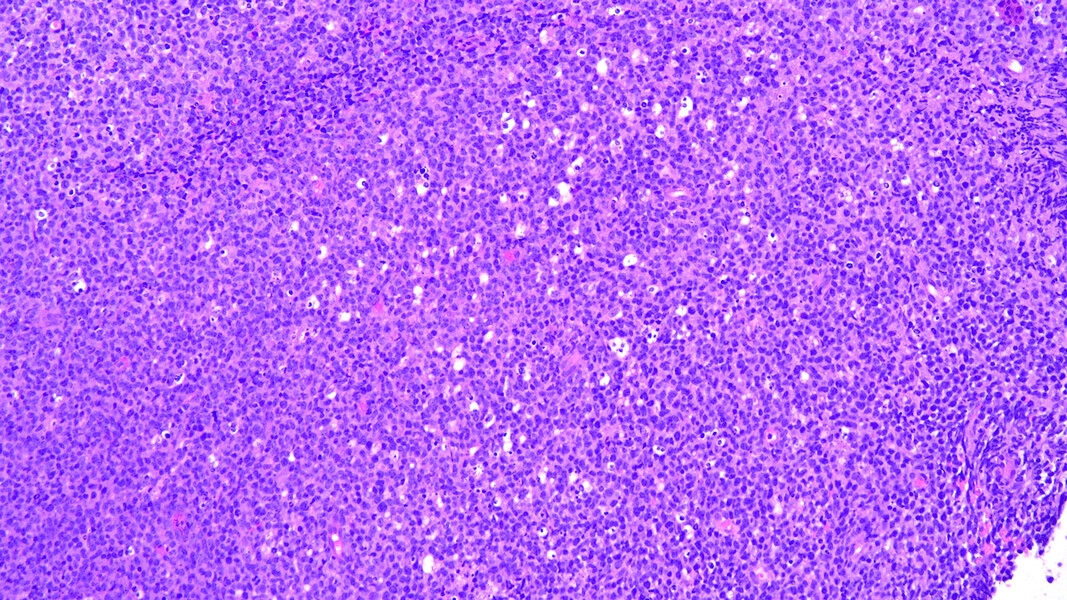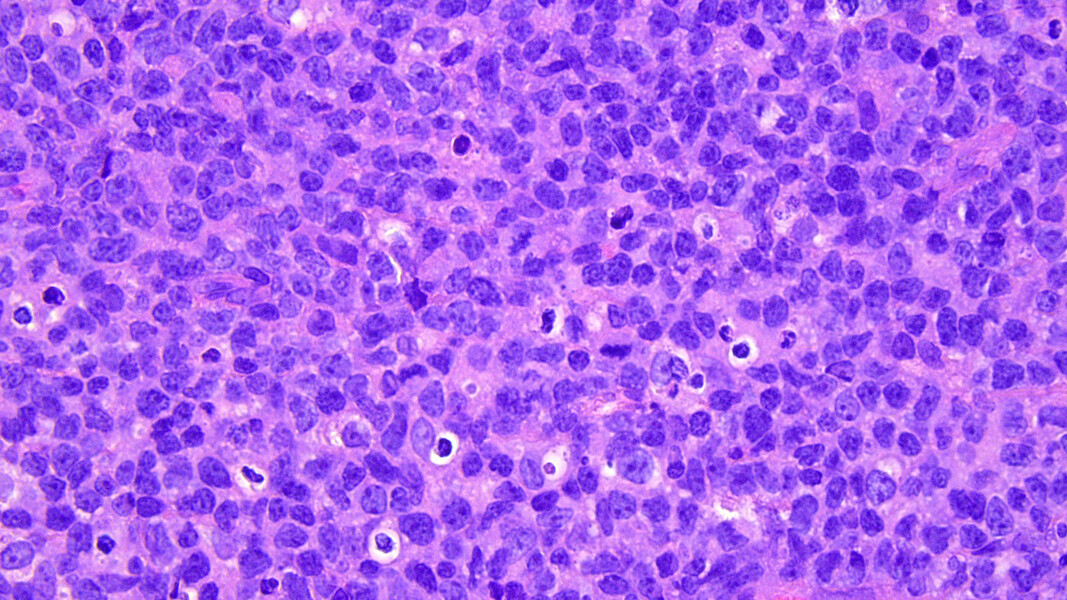Breadcrumbs
Case of the Month: January 2024
Clinical history
A 63 year-old male presents with nasal obstructive symptoms (blockage, nasal discharge and epistaxis) for 2 months. He has also noticed blurry vision in the right eye for the last 3 weeks. In addition, he endorses unintended weight loss, but no fever or night sweats.
His past medical history is significant for hypertension and hyperlipidemia. His medications include atorvastatin and ramipril. He has no known allergies. He works as a data analyst and lives with his wife and two children. He is a social drinker and non-smoker. Family history is non-contributory.
He was seen by a ENT surgeon who performed some investigations (imaging). CT shows a 5 cm, locally destructive mass arising in the left nasal passage. It involves nasopharynx, hard palate and the inferior aspect of the left orbit. There is also extensive adjacent soft tissue involvement.
A biopsy of the nasal cavity mass was performed.
Questions:
- What is the differential diagnosis for the “starry sky” pattern on histology?
- Based on the imaging and histologic findings, what are your differential diagnoses?
- What lymphoproliferative disorders occur in immunocompromised individuals and what virus is commonly associated with them?
How to participate
Take a look at the H&E images.
Anyone is welcome to try to solve the puzzle by commenting on the related post on our Instagram.
If you are a medical student at the University of Toronto, you can also:
If you do, you are in for a chance to win a $100 gift card! (UofT Med students only).



Discover the answer to January's Case of the Month challenge!
The answer to January’s case of the month is Extranodal NK/T-cell lymphoma.
Extranodal NK/T-cell lymphoma is a rare lymphoma of natural killer or T-cell lineage that predominantly occurs at extranodal locations, most commonly the upper aerodigestive tract with the nasal cavity being the prototypical site. It is characterized by vascular damage and destruction, prominent necrosis, cytotoxic phenotype, and association with Ebstein-Barr virus (EBV). Patients with nasal involvement often present with obstructive symptoms due to mass effect. The lymphoma can extend to adjacent tissues including the nasopharynx, paranasal sinuses, orbits, oral cavity, palate, and oropharynx, and disseminate to other sites such as the skin, gastrointestinal tract, lymph nodes, and bone marrow. This lymphoma is highly aggressive with short survival and poor response to therapy.
The notable pathological feature, in this case, is the “starry sky” pattern, which is composed of tingible body macrophages (the stars) on a background of tumour cells (the sky). This pattern is commonly seen in aggressive lymphomas such as Burkitt lymphoma, lymphoblastic lymphoma, and high grade B-cell lymphoma.
NK/T-cell lymphomas, like several other lymphomas and lymphoproliferative disorders, are positive for EBV RNA staining. EBV is a member of the herpesvirus family and is an ubiquitous virus in humans (>90% of humans infected during their lifetime). EBV can activate during immunocompromised states and cause a variety of different lymphoproliferative disorders. It was the first virus ever linked to a tumour and that tumour was Burkitt lymphoma!
If you are a current medical student at U of T, you can register to join the December case of the month lecture online or in person and have a chance to win a $100 gift card!
You can also join the Special Interest Group in Laboratory Medicine to learn more about Laboratory Medicine.
Laboratory Medicine and the study of disease for medical students

